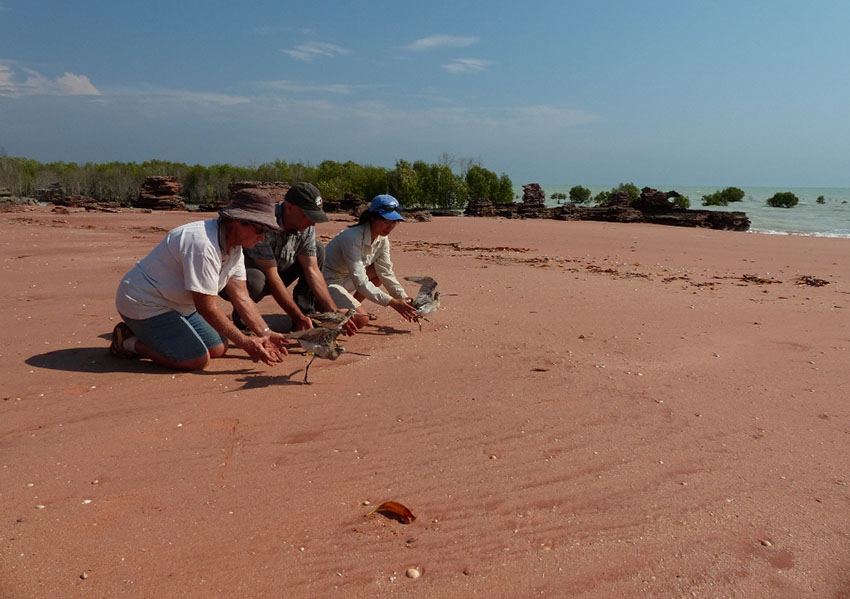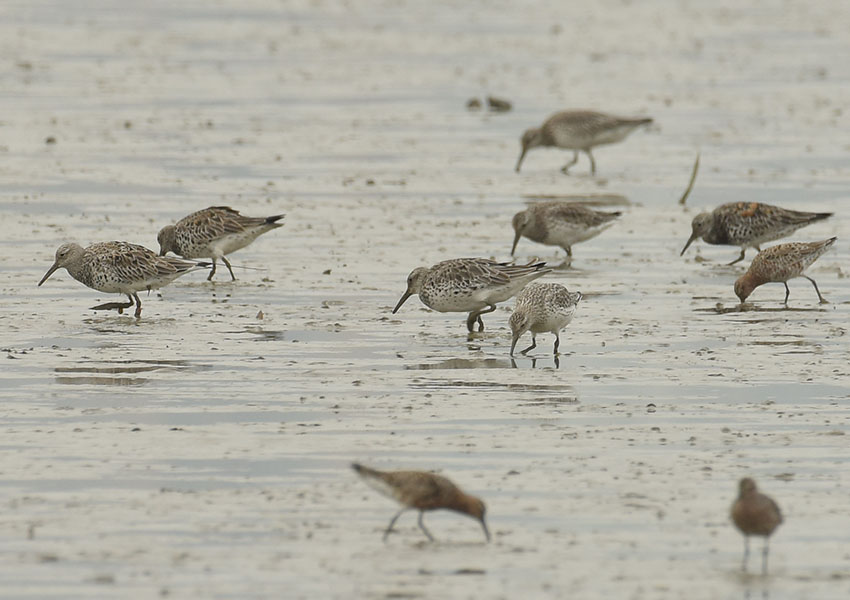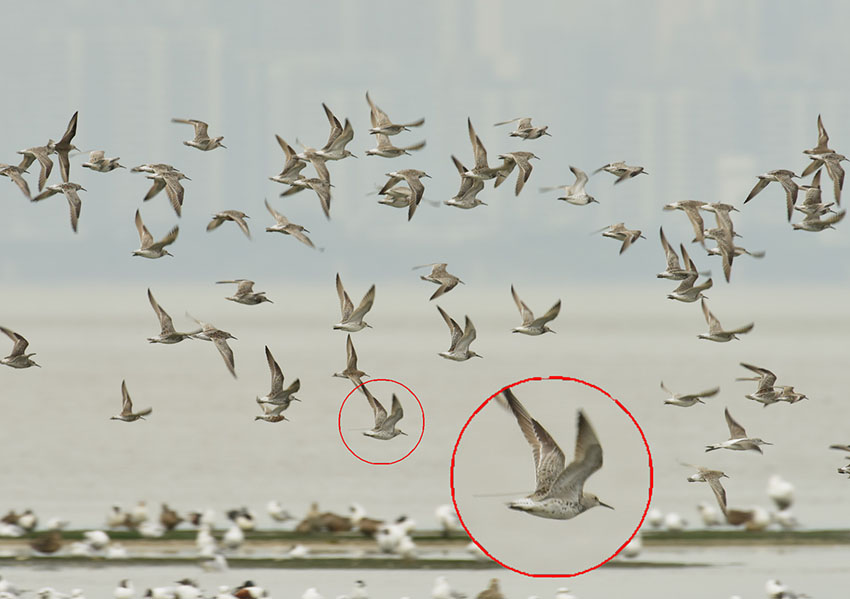Grote Kanoeten gebruiken andere ‘tankstations’ dan eerder gedacht
Geïnspireerd door het belang van de Europese Waddenzee voor trekvogels, heeft China vorige week onderdelen van haar eigen waddenzee – in de Gele Zee - succesvol genomineerd voor de Unesco Werelderfgoedstatus. Hiermee is de lijst beschermde gebieden nog verre van compleet, want nieuw onderzoek met gezenderde grote kanoeten op trektocht van Australi ë naar de Noord-Russische toendra zet een gangbare veronderstelling op z’n kop. 83% van de 92 rust- en foerageergebieden waar ze onderweg 'bijtankten', van Borneo tot Kamtsjatka in Rusland, was tot nog toe onbekend bij vogelonderzoekers, natuurbeschermers en overheidsinstanties.
In natuurbeschermingskringen ging men er van uit dat de belangrijke kustgebieden wel zo’n beetje bekend waren, maar een internationaal team van onderzoekers van het NIOZ en de Rijksuniversiteit Groningen en drie Chinese universiteiten werd verrast door de satellietdata van de vogels. Grote Kanoeten (Calidris tenuirostris) zijn nauw verwant aan de ‘rode’ kanoeten (Calidris canutus) die in de Waddenzee voorkomen. Grote Kanoeten komen echter alleen voor langs de Oost-Aziatisch Australische trekroute. Hoewel rond de Gele Zee bij China en Noord- en Zuid-Korea al van ruim 60% van de foerageergebieden bekend was dat er grote kanoeten voorkwamen, was minder dan de helft van de foerageergebieden in Zuid-China en Oost-Rusland bekend. Door het satelliet-zenderen van de vogels werden 25 nieuwe en belangrijke gebieden in Zuidoost Azië ontdekt, met name in Vietnam, de Filippijnen, Maleisië en Indonesië, waar de vogels zich tegoed doen aan schelpdieren.




Geen bescherming
Geen van deze onbeschreven kustgebieden geniet momenteel enige status van bescherming. Dat is een probleem door de bedreigde status van Grote Kanoeten, waarvan de populatie jaarlijks met enkele procenten afneemt.
Onderzoeksleider en NIOZ/RUG-onderzoeker prof. dr. Theunis Piersma: “Het uitrusten van wadvogels met heel kleine zendertjes geeft ons de mogelijkheid om, ongehinderd door logistieke of politieke beperkingen, de verspreiding van ’s werelds meest extreme trekvogels in kaart te brengen. Zulk onderzoek drukt ons iedere keer weer met de neus op het gegeven dat de feitenkennis - waarop wij onze natuurbescherming baseren - niet op orde is. Door zenderwaarnemingen langer dan een jaar vol te houden, komen we ook op het spoor van de snelle veranderingen in gebiedsgebruik en trekroutes die door verlies van leefgebieden en klimaatverandering lijken te worden veroorzaakt. Zo zijn de trekkende wadvogels voor onze aarde de vrijlevende evenknie van de gekooide kanaries in de kolenmijnen.”
Meer nieuws
-
19 december 2025
Mariano Méndez ontvangt Argentijnse RAÍCES-prijs
-
18 december 2025
Waarom innoveren, en voor wie?
-
17 december 2025
Ben Feringa wint Feynmanprijs
